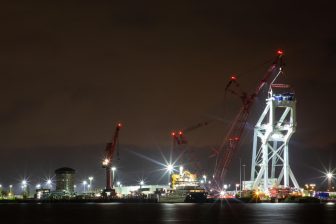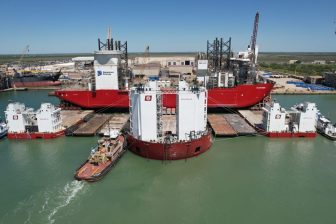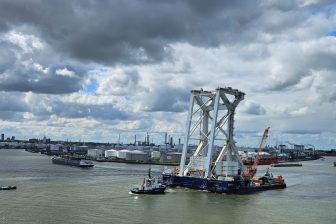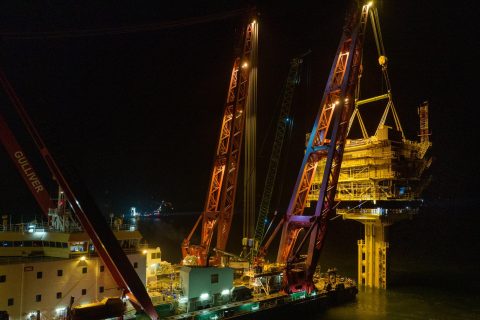
RWE installs 1,400 tonne Kaskasi offshore substation topside
RWE’s sixth wind farm off the German coast, the 342 megawatt Kaskasi project, 35 kilometres north of the island of Heligoland recently marked a new construction milestone. RWE noted the 1,400 tonne offshore substation topside was placed onto the monopile foundation.
The journey of the 1,400 tonne substation topside started in Danish Aalborg at the manufacturing facility of Bladt Industries and took two days to ship across the North Sea. Gulliver, a Floating Heavy Lift Vessel of SCALDIS, placed the substation onto the monopile foundation, completing the installation of the heaviest component of the Kaskasi offshore wind farm.
In parallel, foundation installation works are underway. Seaway 7’s Strashnov, DEME’s Neptune and Sea Challenger and Fred Olsen’s Blue Tern, four vessels are engaged in the installation of a total of 38 monopile foundations for the wind turbines and their transition pieces. The foundations, each up to 64 metres long, weigh up to 740 tonnes – approximately equivalent to 600 small cars. The operations and processes at the offshore construction site are coordinated around the clock by the RWE Control Room on Heligoland. The nautical staff at Ems Maritime Offshore are supporting the RWE team.
To install the foundations into the seabed at depths of 18 to 25 metres, RWE is utilising two installation methods: conventional hammering and innovative vibro pile driving technology, which has the potential to reduce underwater noise emissions. This benefits the marine environment in particular. The pilot implementation of the vibro technology at Kaskasi is accompanied by the VISSKA research project, which is funded by the German Federal Ministry of Economic Affairs and Climate Action.
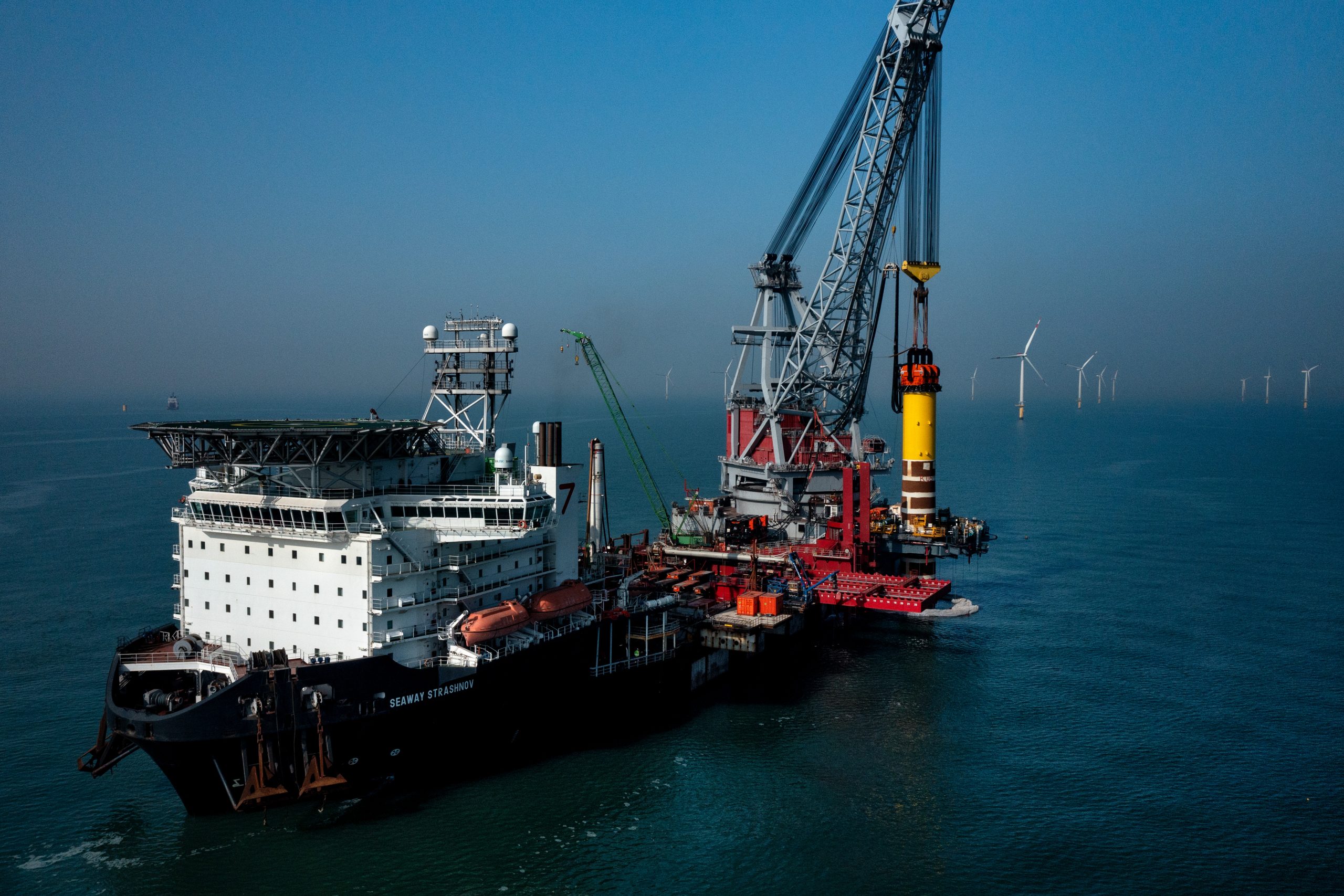
Innovation at Kaskasi
At the Kaskasi offshore wind farm, three new technologies will be tested. RWE plan to install special collars around
three monopile foundations (Collared Monopile). A further innovation is the introduction of foundations which were installed using vibro pile driving and are enclosed in a concrete ring that expands in the seabed (Self-Expanding Pile Shoe).
In addition, a sustainable product will be see its German premiere at Kaskasi: Siemens Gamesa and RWE will equip a number of wind turbines with recyclable rotor blades. The blades are the first of their kind, thanks to an innovative resin that enables components to be recycled for new applications at the end of their lifecycle.
Installation of the wind turbines is scheduled to start this summer. By the end of 2022, a total of 38 wind turbines are to be fully operational. Then, the Kaskasi offshore wind farm will have the capacity to supply the equivalent of approximately 400,000 households with green electricity every year.
You just read one of our premium articles free of charge
Register now to keep reading premium articles.


